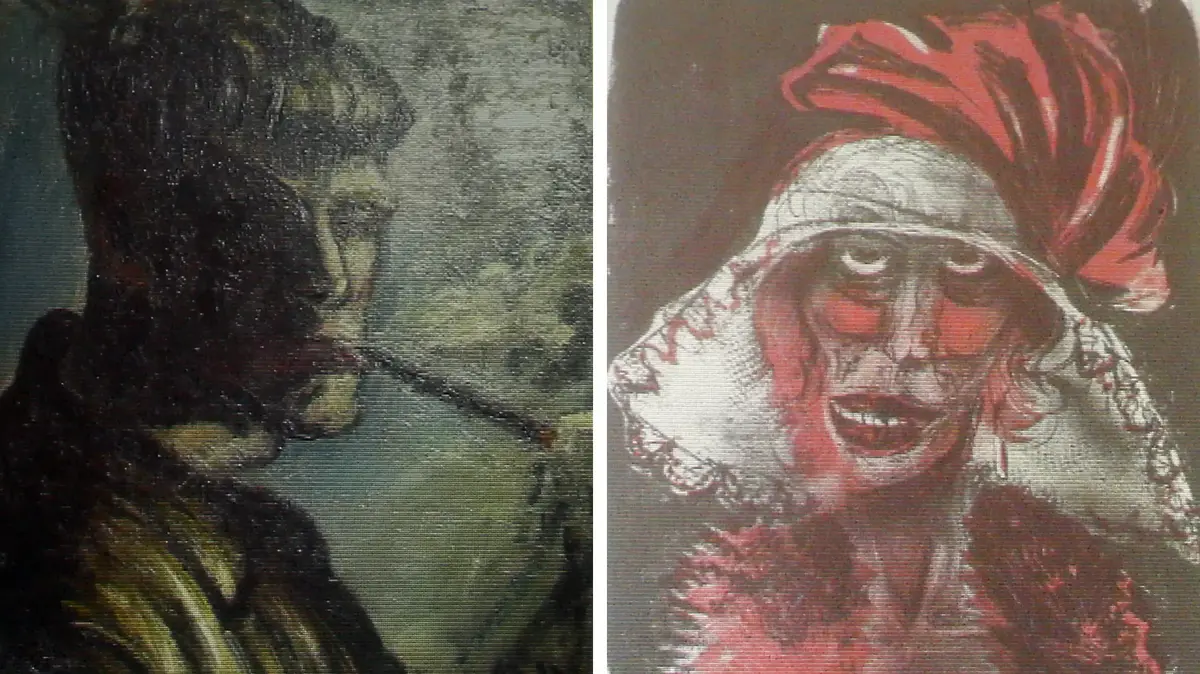I have returned to the Museu de Arte Antiga de Lisboa with something similar to the illusion of meeting an acquaintance who was visiting the city.
The architecture of the museum and the square in front of it are an early gift of the visit.
The Plaza del 9 de Abril overlooks one of those high Lisbon railings that dominate the width of the Tagus and open towards the 25 de Abril bridge and the horizon of the Atlantic.
The museum's garden overlooks that same view, and in these late autumn days the number of visitors is usually fewer than the white statues of gods and nymphs.
The old acquaintance I come to see today is Poussin: one of his two self-portraits, the one from 1650, which is usually in the Louvre, is now temporarily in Lisbon, in an even more attractive exhibition because it consists of a single painting.
In the overabundance and crowds of the Louvre, everything tends to blur.
In this Museo de Arte Antiga de Lisboa, so secluded and silent, Poussin's self-portrait can be seen from far away, at the end of the main gallery.
When a guard entered, he told me to open his legs and spread his arms, and he passed one of those metal detectors with which they intimidate you at airports along my body.
A strict sign indicates that all bags and backpacks without exception must be deposited in the cloakroom.
In this museum, where there is hardly ever a large public, the guards are few and far between, and they tend to have a self-absorbed air.
In front of the room where Poussin's self-portrait is, instead of a normal security guard there is an alert uniformed security guard.
The portrait has an extraordinary quality of presence.
Poussin, slightly to the side, looks the viewer in the eye.
He has an expression that is both stern and cordial.
In the look there is reserve and confidence, an intelligence highly trained in observation.
Around his eyes there is a redness as if from fatigue and sleeplessness.
Suddenly, with the memory of the metal detector at the entrance and the sidelong glances of the security guard, I realize how easy it would be to irreparably damage this painting;
of the extreme fragility that painting always has, beginning with the materials it is made of, a piece of canvas, some pigments and oils, a wooden stretcher, a frame.
It's amazing that something so precarious has survived for so long.
And even more astonishing is that, from such poor elements,
the talent and technical wisdom and psychological acumen of a painter who has been dead for several centuries challenge us in such an immediate way.
I believe that it is that resounding and ambiguous truth of art that unleashes the suspicion of doctrinaires and ideologues and the destructive anger of the enlightened.
The objective nobility of a cause unfortunately does not exclude some imbeciles from defending it, nor does it prevent excesses from being committed in his name.
To vindicate a right as sacred as the female vote, the suffragette Mary Richardson considered it necessary to attack with a butcher knife the
I believe that it is that resounding and ambiguous truth of art that unleashes the suspicion of doctrinaires and ideologues and the destructive anger of the enlightened.
The objective nobility of a cause unfortunately does not exclude some imbeciles from defending it, nor does it prevent excesses from being committed in its name.
To vindicate a right as sacred as the female vote, the suffragette Mary Richardson considered it necessary to attack with a butcher knife the
I believe that it is that resounding and ambiguous truth of art that unleashes the suspicion of doctrinaires and ideologues and the destructive anger of the enlightened.
The objective nobility of a cause unfortunately does not exclude some imbeciles from defending it, nor does it prevent excesses from being committed in its name.
To vindicate a right as sacred as the female vote, the suffragette Mary Richardson considered it necessary to attack with a butcher knife the
Venus del Espejo
by Velázquez in 1914, in the National Gallery in London, not far from the room where a few days ago presumed activists of an equally legitimate cause threw a can of ketchup at
Van Gogh's
Sunflowers .
At the end of October, at the Musée d'Orsay, a woman was caught trying to rub her face against a Van Gogh self-portrait, on which she stated that she, too, was planning to knock over a can of soup.
Human foolishness is unfathomable, and more so at a time when its occurrences can achieve instant universal celebrity.
But behind this epidemic of vandalistic antics against painting in museums acts the immemorial Puritan hostility towards images mixed with a very current ideological simplicity, which grants art and literature no other legitimacy than that of propaganda, and which it aspires to a complete redemptive and police purification of the past, wanting to eliminate from it everything that does not agree with the official guidelines of the present.
The literary tradition and the historical collections of museums have become abominable repertoires of sexism, misogyny, homophobia, colonialism, racism.
There is no doubt that the seal of all these scourges is indelible;
nor that the cause of equality and justice is as urgent as the effective mobilization against climate change.
In Iran, hundreds of thousands of women literally let their hair down and gallantly refuse to submit to the dark dictates of the clerics.
In northern Canada, indigenous communities organize to preserve the boreal forests that were the habitat of their ancestors for centuries.
Important museums in Europe are committed to returning to African countries works of art that were stolen by armed hands in the years of colonial plunder.
There will be better ways to advocate for clean air and an end to fossil fuels than to throw ketchup cans at some of the most beautiful, most perfect works,
I keep looking at Poussin's self-portrait and I remember the final and rather zoological qualification that I discovered for the first time in an American university in the early nineties: Poussin is, of course, male, and white, and European, and dead.
Dead White European Male.
In the luxurious and corrupt Rome of papal despotism, Poussin carved out for himself the independence of a solitary artist, set apart from the clerical and courtly world, cultivating a cautious freedom of spirit inspired by the ancient Stoics.
He was not, like Velázquez in the court of Felipe IV, a qualified servant, but a prestigious painter who treated himself on an equal footing with the few chosen clients for whom he worked, like this Paul Fréart de Chantelou who wanted to have his portrait, and with whom he wrote letters full of confidence and intellectual alertness over the years.
A masterpiece baffles and intrigues us because it belongs to his time, not ours.
He does not seek to seduce us, nor to persuade us with his ingenuity or with his opportunity.
He doesn't know we exist.
We have to make the effort to approach it.
It is in itself a celebration of the sensitivity and work that made it possible.
His excellence stimulates us, and also puts us in our place, and therefore can arouse our resentment.
It is not the abstract vehicle of a "content": it is a material object, made by the effort and skill of capable people, and its meaning is so deep and subtle that it cannot be reduced to any message, not even to the explicit intention. of those who ordered it.
Poussin's stern and serene look reflects our common humanity just like the disturbed look of the late Van Gogh.
The fact that someone thinks of claiming something by throwing a can of soup or tomato sauce at either of them suggests a very contemporary alliance between fanaticism and frivolity.
groundbreaking
performances .
Subscribe to continue reading
Read without limits
Keep reading
I'm already a subscriber

/cloudfront-eu-central-1.images.arcpublishing.com/prisa/ZADA6BPQ2NH3DD25CN7FVIHC7A.jpg)


/cloudfront-eu-central-1.images.arcpublishing.com/prisa/TQZBOKCBUZFHZPEX2X4N7IR6GI.JPG)




